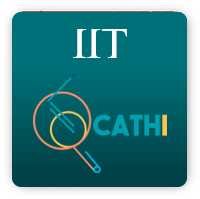Comparing workload and performance during demanding push force and mental tasks
Abstract: BACKGROUND:The effects of performing occupational tasks that demand physical and mental efforts in combined and simultaneous approaches are unknown, especially when pushing force is analyzed as a physical effort and solving arithmetic problems as a mental effort. OBJECTIVE:In this study, p...
Saved in:
| 其他作者: | , , , , |
|---|---|
| 格式: | Artículo |
| 语言: | English |
| 出版: |
2022
|
| 主题: | |
| 在线阅读: | https://doi.org/10.3233/WOR-220067 https://content.iospress.com/articles/work/wor220067 |
| 标签: |
添加标签
没有标签, 成为第一个标记此记录!
|
| 总结: | Abstract: BACKGROUND:The effects of performing occupational tasks that demand physical and mental efforts in combined and simultaneous approaches are unknown, especially when pushing force is analyzed as a physical effort and solving arithmetic problems as a mental effort. OBJECTIVE:In this study, physical and mental demands were simulated in a lab environment to assess the workload. METHODS:Using a push force dynamometer, the maximum push force strength of each participant was recorded, and the physical demand was simulated exerting the push force in low, medium, and high levels. Mental demands were simulated solving arithmetic tasks in low, medium, and high levels. Two experimental conditions were defined: (1) task with combined physical and mental workload (performing physical demands first and mental demands after) and (2) task in a simultaneous way (performing both demands at the same time. NASA-TLX Traditional and RAW were applied to assess the workload. RESULTS:The time to complete the tasks was significantly longer in the combined than the simultaneous approach, and performance was significantly higher in the combined than the simultaneous tasks. CONCLUSION:The combined approach obtained better results than simultaneous and Traditional NASA-TLX presented a significantly higher level of global workload index than RAW. |
|---|
